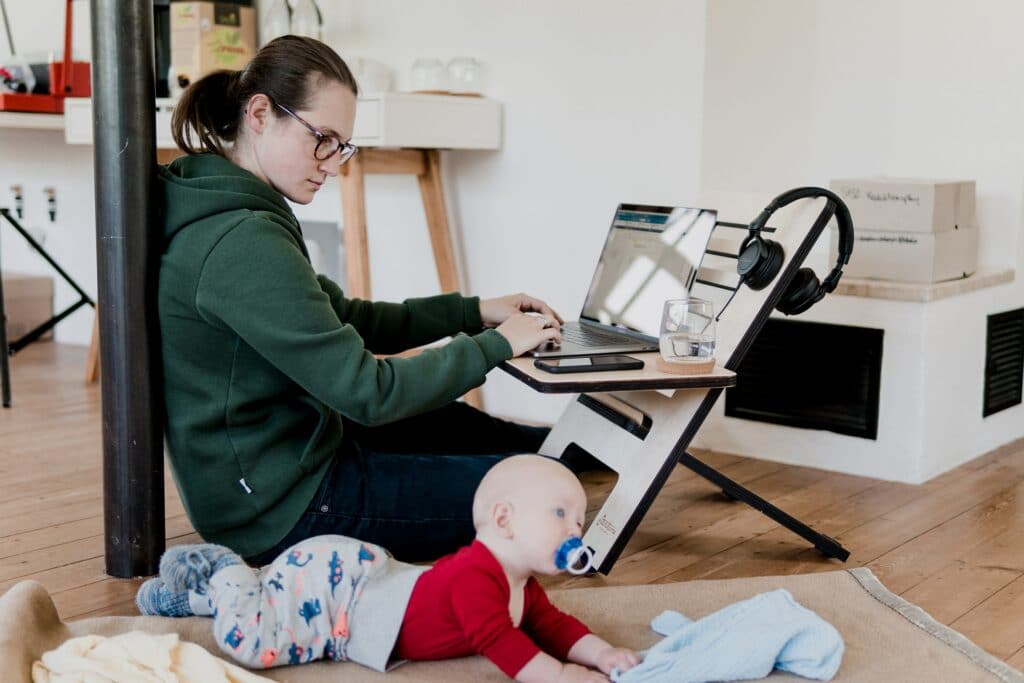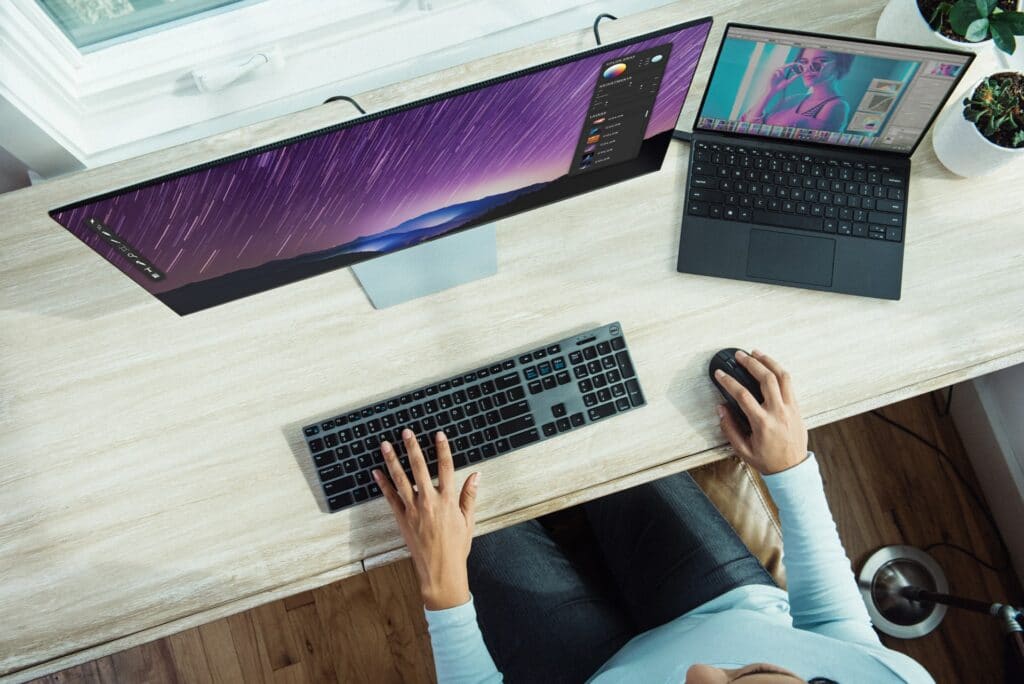Welcome to Your New and Easy Work From Home Setup
Once upon a time (aka 2019), working from home was for freelancers and the lucky few with flexible employers. Today, of course, it’s much more commonplace – with 38% of UK employees recorded as working exclusively from home in June 2020. Organizations have discovered that WFH is cost-effective and easy to manage, so it looks like it’s here to stay.
Suddenly finding that your workstation has moved from the office to your spare room can come as a shock. How can your old laptop or kitchen table replace the IT-supported environment you’re used to? Don’t fear, it’s actually really simple to create a WFH setup that works. Here’s how!

Keep your WFH hardware simple
Forget those glossy pictures of sleek home offices you’ve seen on Zoom backgrounds. In reality, you can work effectively from home with very little. The minimum WFH hardware you’ll need is a laptop or desktop with an integrated webcam and mic. Actually, scratch that – you can even work from home on a tablet since a lot of them also have webcams and work with wireless keyboards.
Add a decent WiFi connection and a flat surface and you have all the basics. Ideally, you will designate a quiet space to set up your kit as close to the router as possible, and though we all like the idea of a paperless office, access to a printer can also be helpful.
Round off the home office feeling with a comfortable chair and a pot of coffee on the go. WFH setup – complete.

The next-level WFH setup
If you’re planning online meetings or hoping to record presentations, you may choose to upgrade WFH hardware like your camera and mic. A Logitech camera on a basic tripod will enhance your screen presence and there are plenty of good vlogging mics available on Amazon.
Space permitting, you may also have the luxury of installing a second monitor. This makes the whole split-screen thing a lot easier to manage and you can collaborate on a Google doc, for example, without having to squint at multiple tiny windows.
Even if you have a sophisticated home office set-up, you may find a laptop easier than a desktop if there is more than one of you working or learning from home. Switch off the camera and no-one will know that you’re hiding from your kids in the shed.
Install the right software
As the freelance sector already knows, much of the available WFH-friendly software, including XSplit VCam, are free or inexpensive. At this point in 2020, most of us have Zoomed or used Microsoft Teams and the online meeting is very much business-as-usual. For pro-level presentations, try XSplit Broadcaster, which started out as a vlogging and gaming platform but is now increasingly popular as a next-level meeting tool.
Your workplace may also have set up collaborative platforms such as Trello or Slack and Google Docs makes editing and sharing work with colleagues incredibly straightforward.
And our real top tip? Use your WFH tech and know-how to keep in touch with colleagues. The change of environment can be the biggest challenge of WFH and using remote software really helps to maintain strong communication channels. Have a listen as XSplit’s Chief Marketing Officer shares his experience of working from home and explains the role software has played in keeping his team together.
